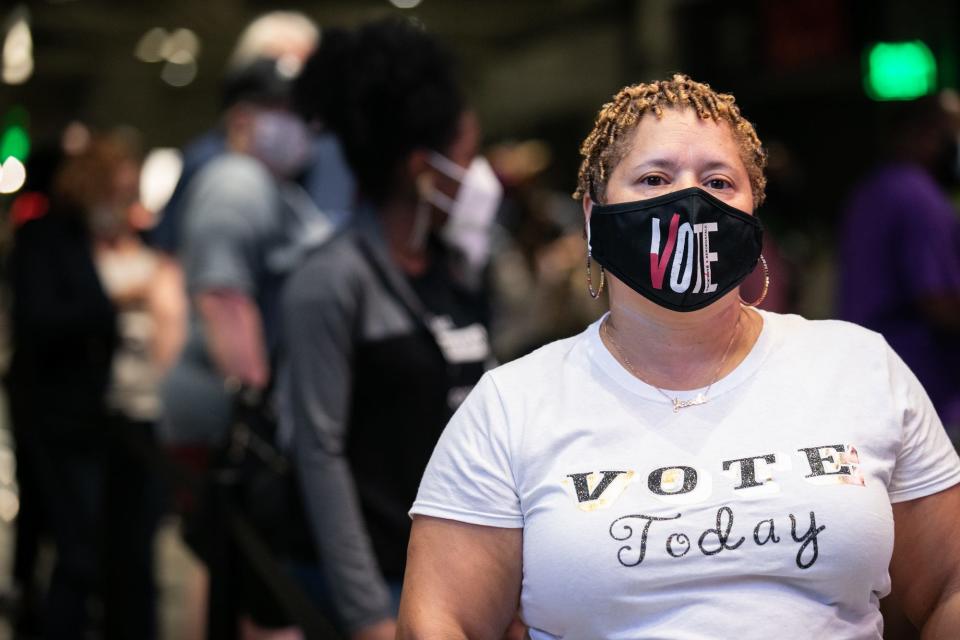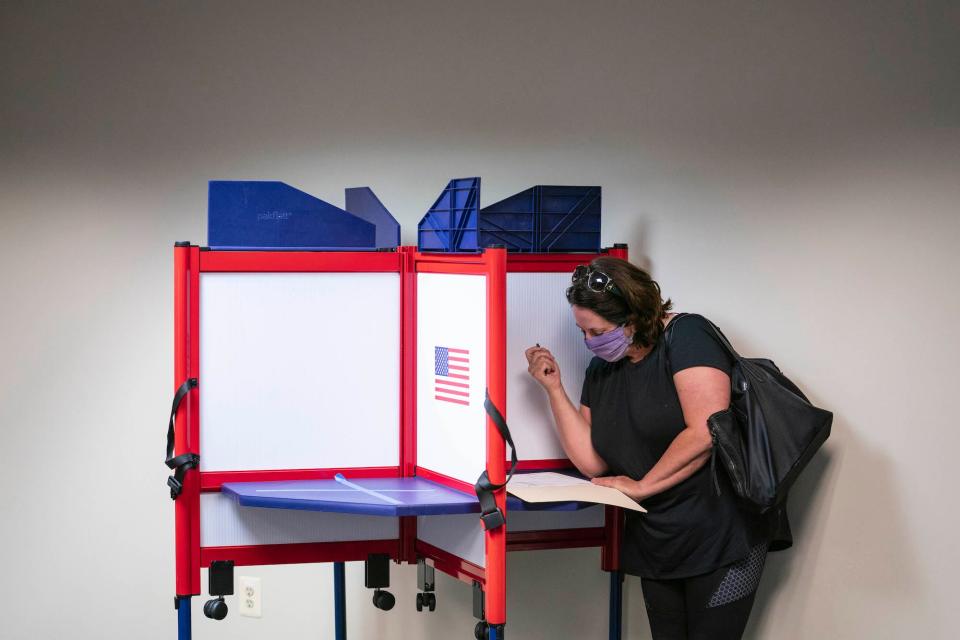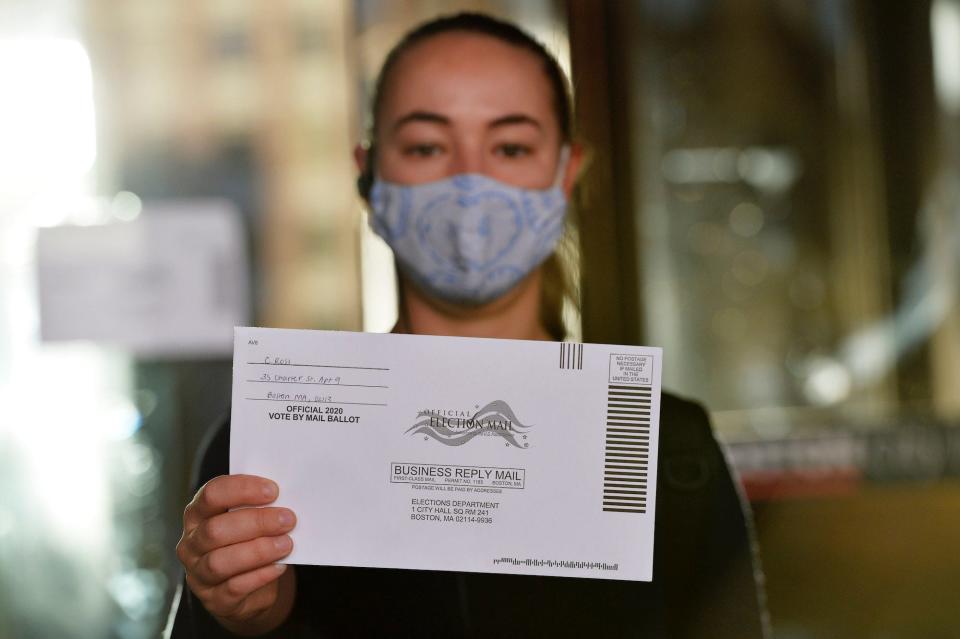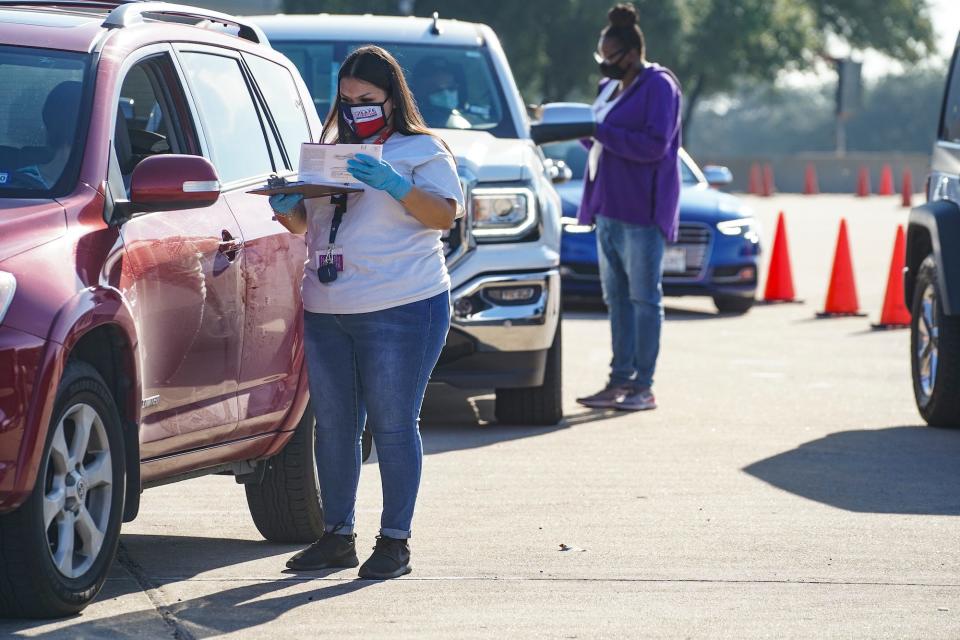Vote in person if you're young and healthy — it's relatively safe, and your vote is more likely to count

More than 66 million Americans have already voted in this year's general election.
Mail-in ballots are more likely to be rejected than ballots cast in person.
The chances of contracting the coronavirus from voting in person are low, so if you're young and healthy, consider voting in person.
More than 66 million Americans have already voted. About 44 million of those have voted by mail — already far more than the 33 million mail-in votes cast in the 2016 election.
That's largely because of the coronavirus pandemic: Because of public-health concerns, most states allow voting by mail this year. All but five states are letting all (or nearly all) voters mail their ballots, and nearly 40% of American voters have said they plan to do so this year.
But if you are young and healthy, here's a suggestion: Don't vote by mail. Cast a ballot in person instead.
Experts do not consider going to a polling place any more dangerous than a trip to the grocery store, as long as voters follow common-sense safety protocols like mask-wearing and social distancing. And voting in person means your vote is more likely to be counted: Historically, only about .01% of in-person ballots get rejected, compared with about 1% of mail-in ballots, though rejection rates vary significantly by state.

This year, a greater percentage of ballots is likely to be rejected because more people are voting by mail in states that typically have higher rejection rates for mail-in ballots, like Georgia. According to a USA Today investigation, if 70 million voters cast ballots by mail in 2020, about 1 million ballots could be rejected overall. That may be enough to affect the outcome of the presidential election or other races.
What's more, ballot-rejection rates could easily be higher this year than in the past, since a record number of people will vote by mail for the first time and may be more likely to make mistakes on their ballots.
Earlier this month, Michael Herron, a professor of government at Dartmouth University, found that first-time mail-in voters in Florida were 2.75 times as likely to have their ballots rejected as people with vote-by-mail experience. That was primarily because the voters sent their ballots in late or didn't include signatures on envelopes.
Plus, states that haven't offered mail-in voting on such a wide scale before could have trouble tallying ballots speedily and accurately.
"We've never had an election where mail voting is such a big deal," Herron told Business Insider. The importance of mail-in voting, he added, "has focused attention on the issues" with the current system — especially its high rejection rates.
Primary elections earlier this year offered a glimpse into how many mail-in ballots might get rejected come Election Day. More than 550,000 mail-in primary ballots were rejected out of a total of 26.6 million mail-in or absentee ballots; that's nearly twice as many as in the 2016 November election, which had nearly 319,000 rejected ballots out of 33 million mail-in or absentee votes.

If, say, 2020's rejection rate for mail-in ballots turns out to be about 2%, that could mean as many as 2.15 million uncounted ballots this November. For reference, Hillary Clinton won the popular vote in 2016 by about 2.9 million votes.
Voting in person is a low-risk activity
During the 2020 primary elections, in-person voting didn't appear to sicken many people, a FiveThirtyEight analysis found. Most experts now don't consider it to be especially risky.
"I actually equate it with takeout," Saskia Popescu, an epidemiologist at the University of Arizona who is a leading expert on coronavirus transmission, previously told Business Insider. "There are so many safety protocols being put into place for safe voting that it is really a lower-risk activity."
That's because most polling places are taking extra precautions. For instance, in Dekalb County, in Georgia, poll workers will wear masks and face shields, and voting equipment will be cleaned at least once an hour. In Maricopa County, in Arizona, all polling locations are expected to provide voters with gloves and masks and to disinfect pens after each use.
"Most polling stations are requiring masks, you're able to distance, and your time inside is very short," Popescu said.
Voting considerations don't affect everyone equally

Younger voters and voters of color — both Democratic-leaning groups — are more likely to have their votes rejected. Both groups have ballots disproportionately rejected for arriving late or not having signatures.
"A lot of problems with signatures are associated with younger voters," Herron said.
For some young, healthy voters, then, these statistics present a clear choice. Their risk of getting seriously ill with COVID-19 is relatively low compared with people in other age brackets, and their risk of getting a ballot rejected is relatively high. So it makes sense to head to the polls.
But for many voters of color, the decision isn't straightforward. Black, Native, and Hispanic Americans have been hospitalized with and died of COVID-19 at higher rates than white Americans. But even Black voters who have plenty of experience mailing in their ballots are more likely to have them rejected than white voters, according to the analysis by Herron's team.
It's a tough choice: Vote by mail, knowing that ballot has a higher chance of getting rejected, or go to the polls but face a higher risk of a severe case if one is exposed to the coronavirus.
"I think we would all agree that voters shouldn't be in that situation," Herron said.
How to reduce your coronavirus risk when voting
The deadline for requesting a mail-in ballot has already passed in some states. So if you still want to vote by mail but haven't requested a ballot yet (and you're not a resident of a universal vote-by-mail state), check as soon as possible to see whether you still can.

If you vote in person, it's still worth taking extra precautions. Bring your own hand sanitizer and pen, wear a mask, stay 6 feet from other voters, and try to go to your polling place when it's not too crowded.
If your county offers the option to vote in your car, consider that. Places like Harris County, in Texas, and Orange County, in California, are hosting drive-thru polling places that let voters roll down a window and pass a poll worker their ballots. The poll worker will check your signature, and then you're good to go.
Read the original article on Business Insider

